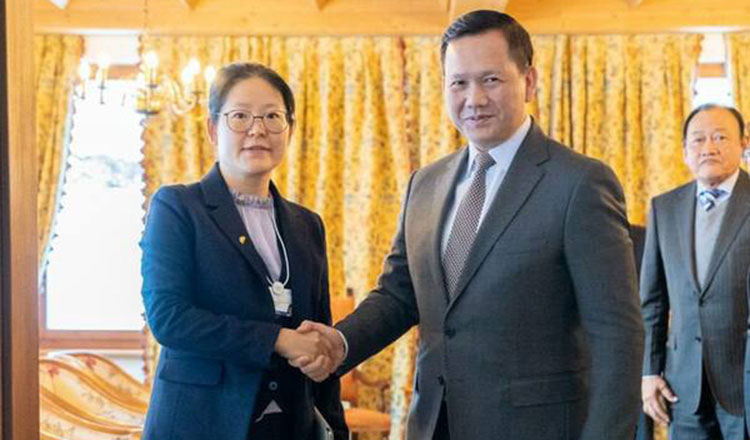
Chinese firm Shenzhen Power Solution has expressed interest in investing in the manufacturing of solar-powered appliances in Cambodia.
Xia Li, Founder and CEO of Shenzhen Power Solution, revealed the business proposal during a meeting with Prime Minister Hun Manet in Davos, Switzerland on Tuesday.
On the occasion, Xia Li informed the Cambodian premier about her company’s products, mainly solar-powered appliances, which can help reduce energy consumption costs and improve people’s livelihoods.
In response, the Prime Minister welcomed the Chinese company’s investment intention and encouraged it to further build partnerships with local Cambodian companies interested in the new business model.
Shenzhen Power Solution is a world-class developer and manufacturer of affordable solar power equipment based in Shenzhen, China and the company is the latest one planning to invest in this burgeoning sector in Cambodia.
It may be noted that Cambodia’s ‘Power Development Plan (PDP) 2022-2040’ proposed to substantially raise the share of solar energy in the total power mix from the current six percent. The policy was formulated in tune with Cambodia’s commitment to be carbon neutral by 2050.
The share of solar power in the total energy mix of Cambodia can reach 3,155 MW by 2040, bigger than the contribution from locally generated hydroelectricity which contributes most of renewable energy in the country now with a share of 45 percent to the total energy mix.
According to the PDP, Cambodia in 2022 has an installed solar power generation capacity of 432MW and by 2030 it will go up to 1,000MW and from there to 3,155 by 2040, indicating a proposed increase of nearly 800 percent over the period.
As per the plan, local hydropower will go up from 1,330MW to 1,560MW by 2030 and 3,000MW by 2040. Power from renewable biomass, another source of clean energy, will go up from 27MW in 2022 to 98MW in 2030 and 198MW in 2040.
The private sector is expected to play a major role in this energy transition for which huge investment is required, along with the support of the country’s development partners.
Nearly 99 percent of villages in Cambodia are electrified and 90 percent of the households are connected to the power grid.
The government has also taken care not to raise the electricity tariffs, despite a revenue loss to the tune of $200 million in 2022 and approximately the same in 2023 as well.
According to the latest data from the World Bank, the Kingdom’s cost of electricity to industrial users remains the highest in the region, which in turn contributed towards the increased cost of doing business.
The industrial electricity cost in 2022 stood at $0.137 per KW hour, a decrease of 18 percent compared to $0.167 per KW hour in 2017, but still the highest in the region.
The Ministry of Mines and Energy (MME) announced a reduction in electricity prices for industrial and agricultural enterprises from October to December 2023 following a special directive from the Premier. The reduction in electricity prices is expected to continue this year as well.
Source:Khmer Times
Share: